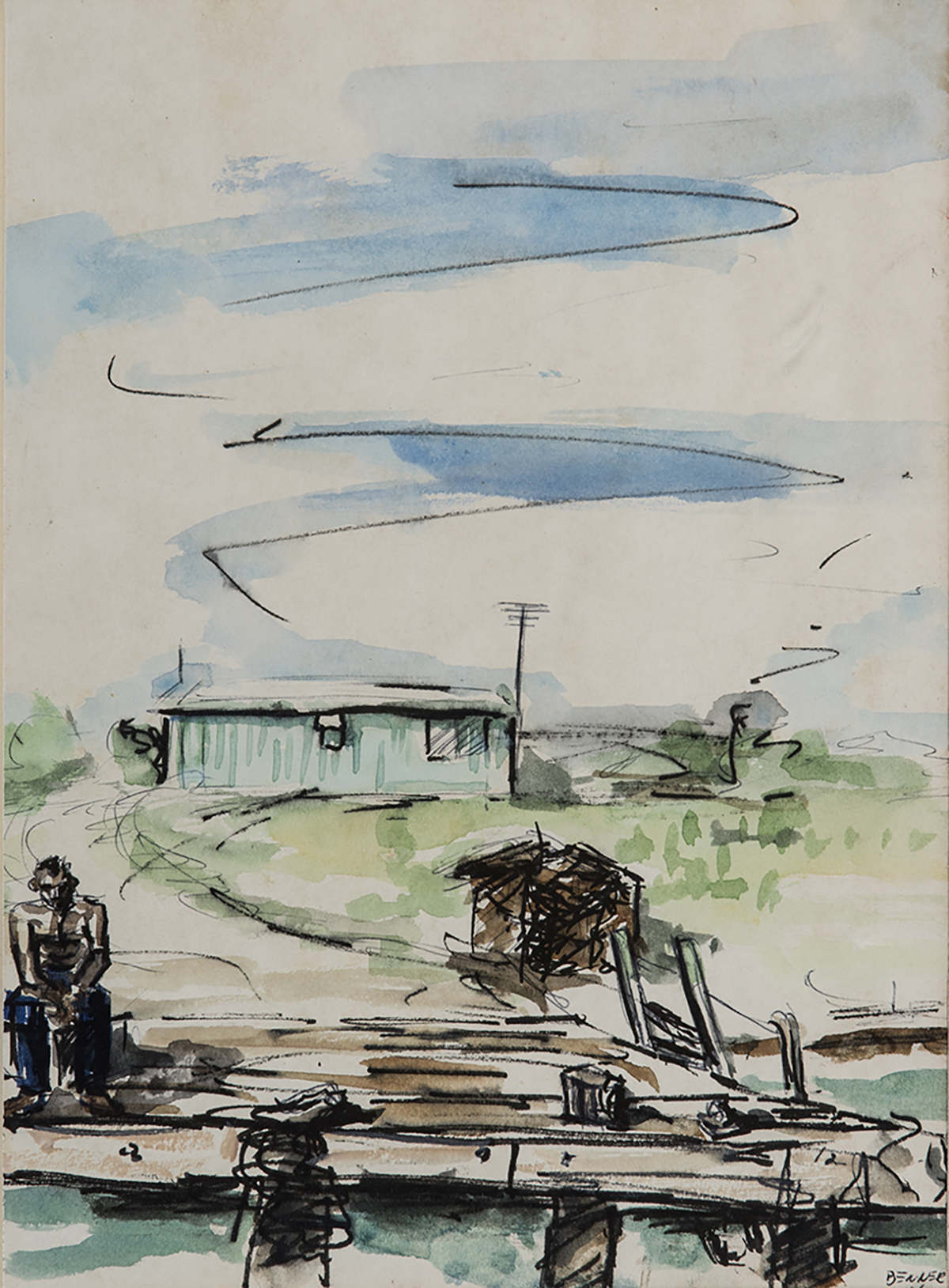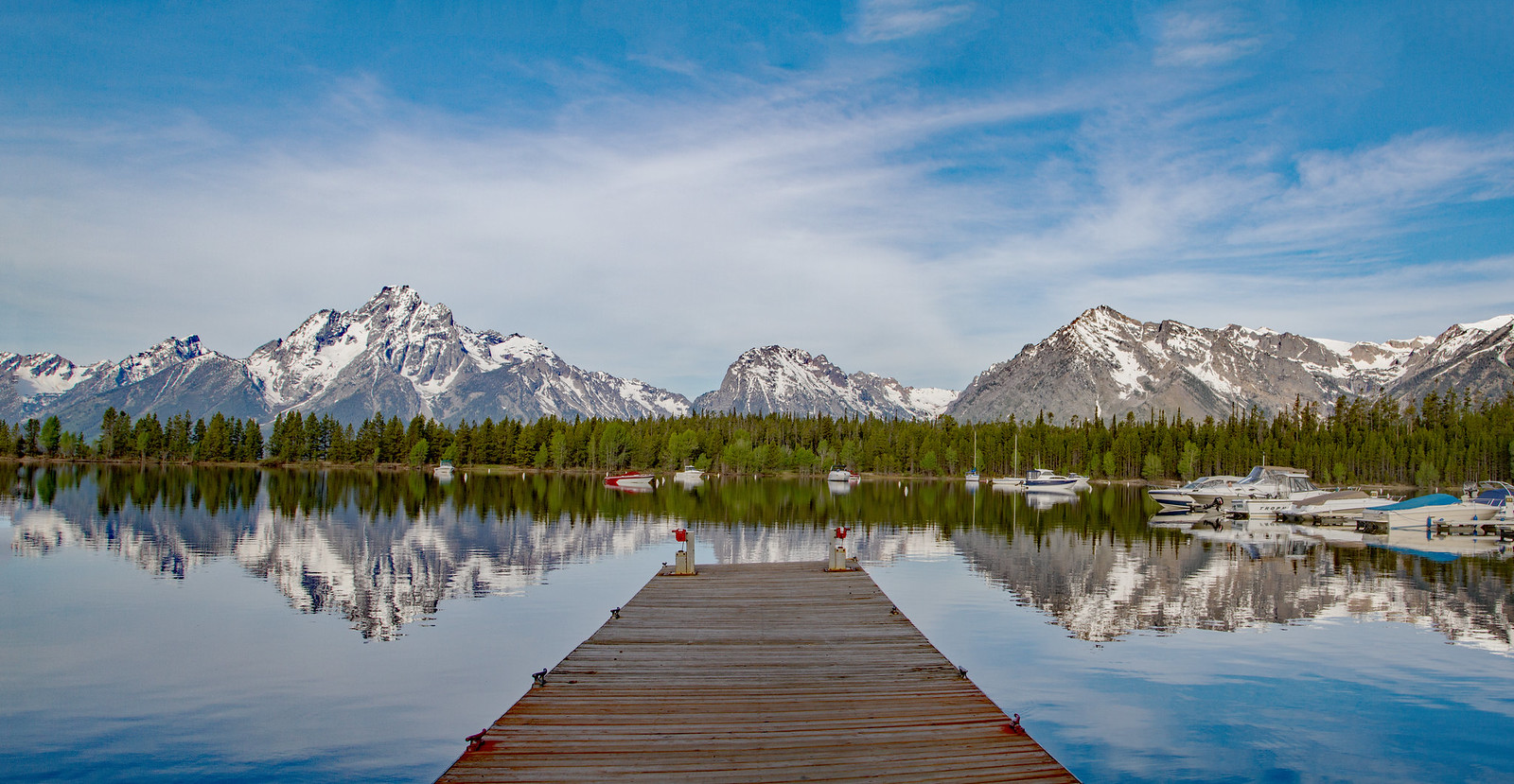Miracle of Worms and Fishes
The three
of us shivered on a dock at Colter Bay
in the Tetons where Mommy dragged Daddy
after a night of cold ones tossed down at the
Silver Dollar Bar in Jackson Hole. She hoped
hooking a fish more luckless than her
would change our lives forever.
in the Tetons where Mommy dragged Daddy
after a night of cold ones tossed down at the
Silver Dollar Bar in Jackson Hole. She hoped
hooking a fish more luckless than her
would change our lives forever.
Mommy
bought a bucket of minnows
and rented fishing poles for our big catch.
Barely balanced, Daddy stood at the dock’s edge,
his porky fingers fumbled a writhing minnow
in one hand, pole in another -- a cigarette
in his mouth stitched shut one eye, squinted the other.
Boozy shakes competed with the squirmy swimmer
he tried to impale. I’m sure he felt
that once this miniature leviathan
dangled from his hook, his job was done --
fish caught, let's hit the bar.
and rented fishing poles for our big catch.
Barely balanced, Daddy stood at the dock’s edge,
his porky fingers fumbled a writhing minnow
in one hand, pole in another -- a cigarette
in his mouth stitched shut one eye, squinted the other.
Boozy shakes competed with the squirmy swimmer
he tried to impale. I’m sure he felt
that once this miniature leviathan
dangled from his hook, his job was done --
fish caught, let's hit the bar.
Mother,
ten feet to his rear, struggled
with the minnow pail. How do you hook them?
she yelled to my father, who’d never
seen a minnow before.
with the minnow pail. How do you hook them?
she yelled to my father, who’d never
seen a minnow before.
The
wriggling midget finally fixed to his line,
Daddy thrust a hefty arm backwards to execute
his great cast. His line flew past me towards
its watery grave but a worm had somehow
replaced the minnow on his hook.
The miracle of worms and fishes?
Daddy thrust a hefty arm backwards to execute
his great cast. His line flew past me towards
its watery grave but a worm had somehow
replaced the minnow on his hook.
The miracle of worms and fishes?
Mother
screamed and grabbed her neck.
The minnow had bailed on Daddio’s back-cast
leaving his hapless hook to extract three
inches of derma from Mommy’s nape. While
Daddy used her blouse to stop the bleeding,
Mommy threw the surviving minnows into the bay
where their prodigy most likely swim today.
The minnow had bailed on Daddio’s back-cast
leaving his hapless hook to extract three
inches of derma from Mommy’s nape. While
Daddy used her blouse to stop the bleeding,
Mommy threw the surviving minnows into the bay
where their prodigy most likely swim today.
It fell to
me to return the empty bucket and fishing poles.
Catch anything? the guy behind the counter asked.
Only the Bloody Wyoming Mothernecker,
I never said, ‘cause I wasn’t old enough yet.
Catch anything? the guy behind the counter asked.
Only the Bloody Wyoming Mothernecker,
I never said, ‘cause I wasn’t old enough yet.

Man Fishing on Dock -- Nolan Benner, Jr.

Colter Bay

Colter Bay
Colter Bay is on Jackson Lake in the northern Grand Teton National Park, 20 mi (32 km) south of Yellowstone National Park in Wyoming. The bay is named after the 1st mountain man, John Colter, who explored the area that became the Yellowstone and Grand Teton National Parks in the winter of 1807-08, the 1st non Native American to do so. The area was popularly referred to as Colter's Hell due to his reports of geysers, bubbling mudpots, and steaming pools of water. Over the next 40 years, other mountain men and trappers told of boiling mud, steaming rivers, and petrified trees in the area, but they were generally regarded as tall tales, and American possession of the territory was not secured until the Oregon treaty of 1846. The truth of these reports was not officially recognized until the Cook–Folsom–Peterson Expedition of 1869; president Ulysses S. Grant signed the Act of Declaration in 1972, creating Yellowstone as the world's 1st national park. As an offshoot of Yellowstone exploration, the Teton mountains and the Jackson Hole valley were explored as well, and the 1st permanent settlers arrived in Jackson Hole in the 1880s. The Grand Teton National Park was not established until 1929, and Jackson Hole was annexed to it in 1950. The Tetons took their name from French Canadian trappers, part of Donald Mackenzie's British North West Company expedition of 1818, who called them "les trois tétons" (the 3 teats).
ReplyDeletePoem, pictures and the comment are interesting
ReplyDelete